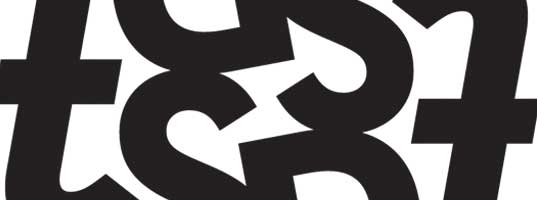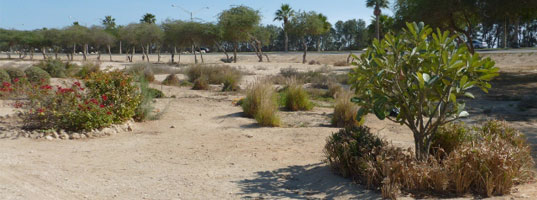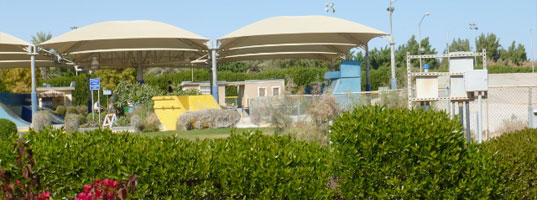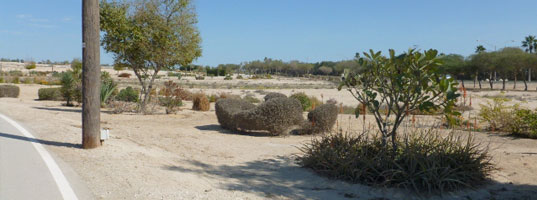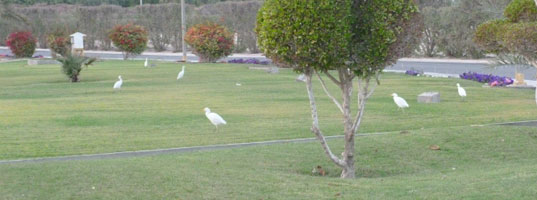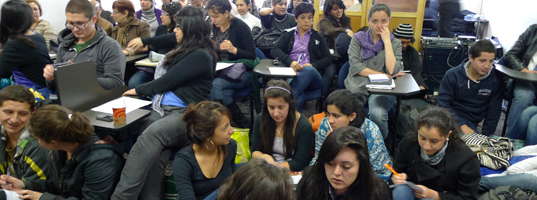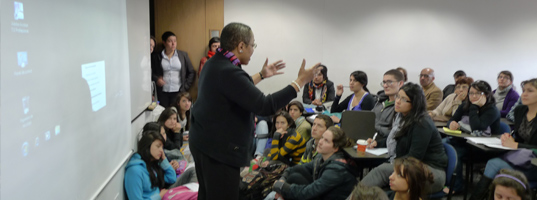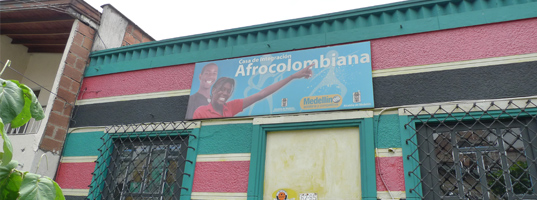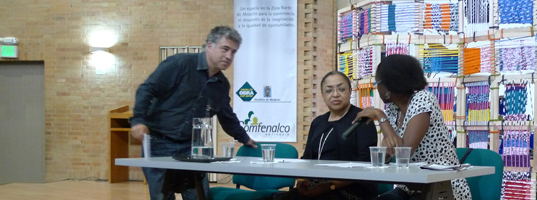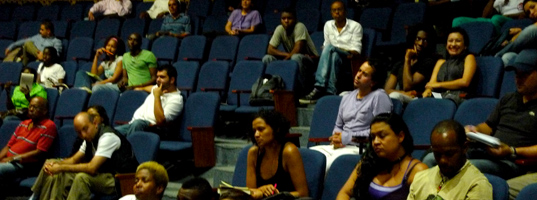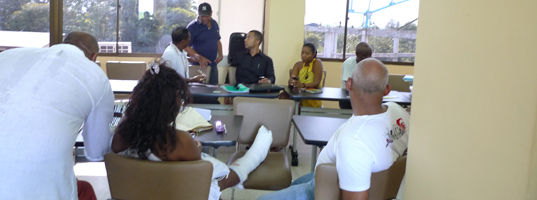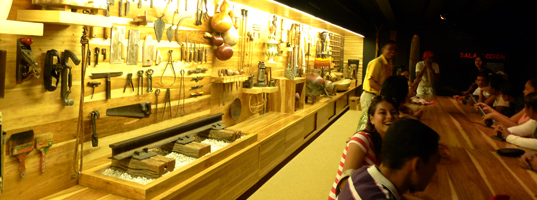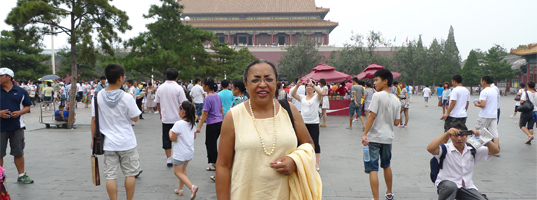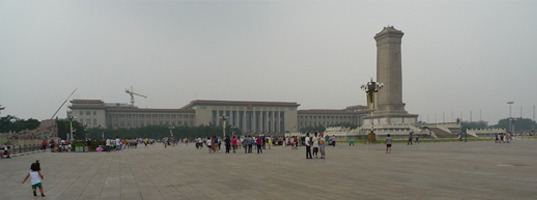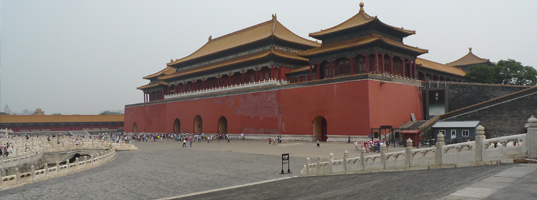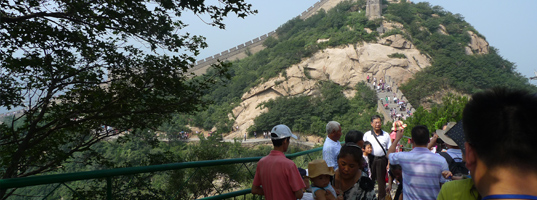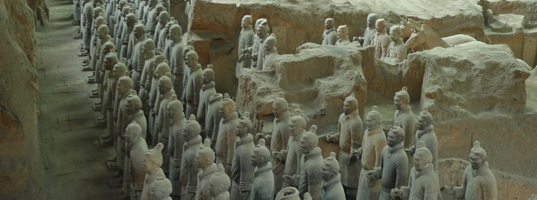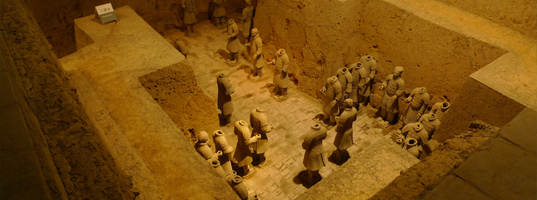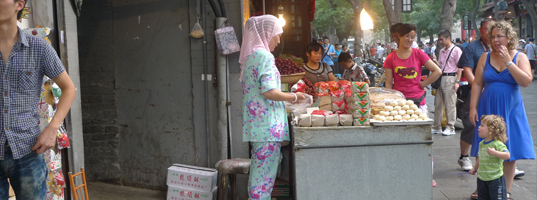Terrie Rouse is back in Washington after successfully opening the National Center for Civil and Human Rights in Atlanta, Georgia and continuing her consulting practice to help cultural organizations through times of change. This week, Terrie and I will be talking about a variety of issues including museum accreditation, the importance of professional development, the feminization of the museum field and the museums issues that just keep coming around. Terrie has presided over the opening and operation of many of our most important cultural institutions. Among her many accomplishments, Terrie has served on the Board of the American Alliance of Museums and was appointed the United States Cultural Envoy to the U.S. Embassy in Columbia. Terrie’s perspectives and observations about our field are always razor sharp and filled with wit.
Blog Archives
Terrie Rouse is the New COO for National Center for Civil and Human Rights
The National Center for Civil and Human Rights (NCCHR), the nation’s first institution to present the legacy of the Civil Rights Movement in the context of contemporary human rights issues, recently named Terrie S. Rouse as Chief Operating Officer.
She is a seasoned museum and nonprofit executive, who has provided expertise in strategic planning on an international scale, including her first time working in Atlanta several years ago as executive director of the Atlanta Ballet.
“We are very lucky to have such an experienced museum professional joining the team,” said Doug Shipman, CEO of the NCCHR. “Her background and expertise in nonprofit operations and strategy will be a great asset as we evolve into a leading educational resource and tourist destination in Atlanta.
“The world of museums and cultural institutions is very specialized,” said Rouse. “I’m so thrilled to return to Atlanta to join an institution that is helping the community to connect to and deeply explore not just our past history, but also modern-‐day issues taking place around the world.”
Rouse has 31 years of experience as a non-‐profit, government and museum management executive and serves as a Museum Accreditation Commissioner. She is the Founding and Former CEO of the United States Capitol Visitor Center (CVC) for Visitor Services where she was appointed in September of 2007. On December 2, 2008, she successfully opened the 585,000 square foot underground facility with 250 employees establishing it as a new Washington, DC destination.
Under her leadership, the CVC attracted 2,300,000 visitors within the first 12 months. While with the CVC Rouse led the development of educational activities, established new volunteer programs, and garnered partnerships with regional and national institutions vested in educational activities.
Rouse also served as Executive Vice President/Director of Museums for Kansas City’s (Mo.) 900,000 square foot Union Station, a historic landmark. During her tenure, she managed two museum directors that encompass Science City, the Kansas City Museum at Corinthian Hall, The City Extreme Screen, Planetarium, exhibitions within Union Station, as well as its permanent collections.
In addition to Kansas City and the Atlanta Ballet, Rouse served as President and CEO of the African American Museum in Philadelphia; was the first Senior Curator for the Studio Museum in Harlem; Director of the New York Transit Museum; and worked as Executive Director at the Children’s Museum of Maine.
She received an M.A. in African History and a certificate from the School of International and Public Affairs at Columbia University. She also received a MPS in Africana Studies from Cornell University. She completed her BA in Intercultural Studies at Trinity College-‐Hartford in Hartford Connecticut.
The Center thanks Veronica Biggins and her team at Diversified Search for their support and help throughout the COO selection process. The NCCHR is under construction near Centennial Olympic Park net to the World of Coca-Cola and across from the Georgia Aquarium. It is scheduled to open in the spring of 2014.
The Center will be the only public place in the world displaying the Morehouse College Martin Luther King Jr. Collection (King Papers). Visitors will be immersed in an interactive story-‐telling experience in each exhibit. The facilities will also serve as a hub for ongoing dialogue — attracting world-‐renowned speakers and artists well-‐informed on a variety of civil and human rights topics. For more information, visit www.civilandhumanrights.org
Consulting Services
Expertise:
- Executive Consultant to National/International Cultural Non-Profit Organizations
- Chief Executive Officer of Non-Profit & Government-Sponsored Cultural Institutions
- American Association of Museums Accreditation Commissioner
- Corporate Responsibility, Property Development & Cultural Education Projects
- Brand Identity, Marketing & Corporate Communications Strategy Development
- Financial Planning & Budget Management
- Strategic Partnerships & Team Building
- Capital Raising
Quote:
“My career and practice is built on strengthening organizations and institutions during periods of change.”
—Terrie S. Rouse, Founding and Former CEO for Visitor Services, Capitol Visitor Center, U.S. Capitol and Accreditation Commissioner, American Alliance of Museums
Terrie Rouse is a veteran of executive non-profit, government and museum/arts management. As an executive manager for museums, art institutions and performance entities; she has extensive experience combining creativity with strategic planning to build and sustain organizations.
Ms. Rouse has array of competencies earned from building, running and supporting non-profit and quasi-governmental organizations around the country. Her skills include statistical analysis, strategic planning, consultant management, security awareness, audience engagement, exhibition / education \ development, computer software technology management, and negotiation tactics. Each experience translated into another mechanism to further the public’s understanding and appreciation of the creative vocabulary that surrounds their environment, and strategies to strengthen institutions’ capacities to be effective and accountable.
Specialties: Art management, government administration, performing arts management, branding, strategic planning, economic sustainability, educational programs, partnerships, project management, capital campaigns
Select experiences:
- Studio Museum of Harlem | Senior Curator
- New York Transit Museum | Founding Director
- The Children’s Museum of Maine – Director
- The African American Museum of Philadelphia | President/CEO
- Terrie S. Rouse Consulting | Major Projects
- Owner Representative | Renovation of JFK Plaza (Love Park), Philadelphia, PA
- Owner Representative | President’s House Project
- Atlanta Ballet | Executive Director
- Union Station Kansas City (Kansas City, MO) | Executive Vice President & Director of Museums
- U.S. Capitol Visitor Center, United States Capitol | Founding CEO
- Terrie S. Rouse | International Consulting
- Cultural Envoy | Bogotá, Columbia
- Museum best practices workshop – Beijing, China
- Operations, best practices over all cultural practices – Saudi Aramco, (Dhahran) Saudi
Arabia
Contact information:
Terrie S. Rouse, Consultant
Upper Marlboro, Maryland, USA
[email protected]
www.terrierouse.com
Saudi Arabia: Chocolate, Coffee, Fruit Juice and Desert Gardens
The first three months in Saudi Arabia have stretched my senses looking for familiar points of references to filter so many new simulations; and have developed on the other hand my communications instincts to meld with the dozens of languages / dialects using their form of English in the daily mission to truly “be understood”. I soon came to learn that it was question of jumping in looking for the qualities that make us all human. The first experiences remain the most endearing of sorting through the cultural nuances that represents my daily cab drivers, who wants to know where you want to go, and also want to know who you are. On several occasions, my lack of Arabic and the driver’s limited knowledge of English were almost comical, but we are on a campus that has a finite set of streets, so we are off looking for my office building with the help of the driver’s friend on the other end of a cell phone.
So a combination of trust and sheer belief that everything will be fine has shaped my experience thusly. In college, I majored in Intercultural Studies at Trinity College (CT) which essential made me aware of the economic dynamics that likely surround most worlds. However, almost thirty-eight years later, I really understand what the foundational work taught me to appreciate the spectrum of the human experience. One might describe it as tolerance, in the most powerful sense of the word, but curiosity may be more interesting take of what one is really going on in your mind when come to live in area where the prevailing value system differ from yours. Of course, that easily happens in any area when you change cities or neighbors, you actually become an explorer in your own county. Thus, the ability to suspend enough of your familiar life clues, to see and to feel the nuances of another environment, is the first step in a new adventure. The next steps depend on your willingness to take the ride!! Well, I am definitely enjoying the ride.
What are the three things I did expect to find in Saudi Arabia – chocolate, coffee and fruit juice. Starting with the chocolate, I learned a new brand name “Anoosh”. My colleagues greeted me a bowl of chocolate in my two story, one bedroom apartment. I had promised myself, and my doctor, that I would steer clear of chocolate. Well after two pieces of Anoosh chocolate, I forgot all about Godiva chocolate, and I was loss in the best chocolate I had ever had, or so I thought. Over the next month, I came to understand that chocolate eating and sharing is a favor activity in the office. More brands new brands – Patchi, Alibaba, Galaxy as well as Mars bars, M& M peanuts, the list goes on. Chocolate, in combination accompanied with other deserts of all varies and tastes, along with dates, breads can be found in abundance most days in the office area. Saudi Aramco does have a big push for healthy eating, because like other areas of the world, diabetes and high blood pressure can be problems. But as many a Saudi will tell you, cooking and eating consumes a good deal of time. The presence of restaurants chains from United States – McDonalds, KFC, Cinnabon, Krisspy Crème, Ponderosa, and etc. – as well as Lebanese, Chinese and Italian restaurants, large and small, lets you know the population explores and enjoys tastes from around the world. However, your traditional Saudi meal, dominated by rice and chicken/ meat, remains the very tasty staple. There is more I need to learn about the food – seasoning, names, variations and so on – it will be prove to be another adventure. However, I have had a good deal of Lebanese food – hummus, flat bread, and baklava. Fried potatoes slices, French Fries, are another staple.
Coffee is a must. There is the traditional Arabic Coffee or Bedouin Coffee which a clear caffeine drink served in small quantities. The mint tea, which is long standing ingredient of the diet, is delightful. These favors are regularly shared by my office colleagues. The Dhahran Commissary on Aramco Camp (Dhahran) sells instant through roasting beans of coffee from around the world. I opted for an instant brand that I was not familiar; Hintz from Germany, but there was easily dozen to choose from even with the limited stock capacity in commissary. The surprise was the abundance of coffee shops in the cities surrounding the compound and in The King of Bahrain across the causeway. There are Starbucks, Costa, and numbers of local shops where coffee baristas are making the most those distinctive drinks the same they are done in West. The baristas are speaking a mixture of Arabic and English, and by the way, the people seating in the coffee shops are men, because there is separation of seating in shops between men and families which would include women and children. Even the small snack stands in our office areas make
a great cup of coffee to order.
I was asked if I wanted Saudi champagne my first evening out to dinner with two families of four kids. I probably responded with a puzzle look until I realized I was about to be introduced to wonderful world of fresh made fruit juice combinations. Combinations of fruit juices is product of the fact that alcohol is not permitted in the country, but the mastery of mixing fruity tastes is an art form in Saudi Arabia. Strawberry juice has become my new favorite drink of choice, along with thick mango juice with plump. Lemon aide with mint, orange juice, lemon juice and the list goes on with bananas, apples and pomegranate. Now the ideal of meal dominated by a fruit juice drink or as a substitute for coffee is a pleasant thought.
Well to end with the expected, but still astonishing, the desert garden, is beautifully on displace throughout the Aramco Camp. Particularly, along the walking trail that borders the golf course, rolling lawns and lush flowers beds in roadway islands. The pictures attached barely give a sense of the surprising beauty nestled in the sandy landscape.
Next installment – Abayas and the power of the smile!
U.S. Department of State Cultural Envoy to Colombia, South America
The goal of the Museo Nacional de Colombia proposal to the U.S. Department of State was to gain insight from an experienced U.S. museum professional on strategies and considerations for incorporating the history and culture of Afro-Colombian descent (aka Afrocolombians) into the content and visual presentation of the museum. North America’s economic legacy of slavery, legal struggle for civil rights and extensive network of African American museums have tackled the impact of enslaved labor in United States. Thus, there are rich resources for institutions on building museums and archives as well as shaping exhibitions and education which are substantial sources of comparison. The Museo Nacional’s request came on the heels of the response to the groundbreaking and ambitious exhibition at the Museo Nacional de Colombia on Afrocolombian religious and spiritual practices. Thanks to the foresight of the Curator of Art and History, the exhibition became the first attempt to incorporate the thoughts, opinions and cultural knowledge of Afrocolumbians into a project.
The Museo Nacional’s curator, Cristina Lleras, developed the exhibition with the collaboration and anthropologist Sofia Gonzales. Lleras and Gonzales forged conversations with individuals and organized groups, who rightly were suspicious of the Museo Nacional’s intention, because their opinions had not necessarily been sought before. Yet, representatives from Afrocolombian organized groups were invited and came to the museum to share their points of view. The groups included Raizal People from the Colombian Caribbean Island, a network of teachers, university students, Ancestry Threads (Yoruba inspired religious practitioners) and a core group of university students who were paid modest sums to do research for the exhibition. The subject of the practices of spirituality was the compromise subject selected by the invited groups for the first Museo Nacional sponsored project to attempt to dramatize the multi-faceted Afrocolombian community.
Titled Velorios Itinerant y Santor Vivos, the exhibition examined, through an open/immersion installation format, a glimpse into how communities honored their living and dead. The exhibition’s life was extended by an unique technique wherein anthropologist, Sofia Gonzales, traveled to over 20 sites to help local communities install their own homage to their spiritual practices as a temporary exhibition (alters and etc.) with poster-size interpretative panels provided by the museum as an accompanying explanation. Thus, each community could celebrate itself while recreating an important act of homage.
The larger context of the Mueso Nacional desire for input is the fact that The 1991 Columbia Constitution and Law 70 (1993) was designed to recognize the historical discrimination of Afrocolombian communities, and address the consideration, of which the law infers, that Afrocolombian be consulted on issues impacting their natural resources and, by extension, their cultural history. The proposed role of the Cultural Envoy was to have conversations with Museo Nacional staff on strategies to incorporate the Afrocolombian into interpretative material including exhibitions. However, the Embassy and Museo Nacional staff saw it as an opportunity for the US Cultural Envoy’s experience, as a museum professional and United States Accreditation Commissioner, to be shared with Museum Studies students and other professionals. The other topics added to the roster were issues of standards, collections, education and accreditation, along with related topics involving management of cultural property. The expanded opportunity entailed the US Cultural Envoy’s travel to the following cities and topics of discussion which were translated in various ways for listeners. A major theme over the twelve-day experience was how institutions can build “public trust” and expand involvement of the community, including Afrocolombians.
Site and Activities: Bogota, Colombia, Museo Nacional de Colombia (home base and host)
* Discussions: local Afrocolombian representatives – eight (8) to ten (10) participants
* ORFA – Organization of Raizal People from the Colombian Caribbean Islands
Ancestry Threads – West/Central African community inspired representatives
CEUNA – Organization of Afrocolombian college students
* Lecture: Universidad Externado –eighty (80) students and faculty attendees
Museum Management
Private discussion with musicology students
* Discussion: Curator and Anthropologist – three (3) participants
Pros and cons of establishing a research center at the Museo Nacional on Afrocolombian
* Informal discussion with the Education Department on workshops and interpretative tours – six (6) participants
* Lecture/workshop: Universidad Nacional de Colombia (Museum Studies Program) – forty-five (45) participants and one hundred (100) internet participants using the US Embassy On-line system
Arts management
Best practices/professionalism
Museum accreditation
Professional standards
* Discussion: Concept for Centro de Memoria de la Region Vallecaucana (Project to be built in Cali, Colombia) – six (6) participants
Accomplishments
The lectures were well promoted and well received by the museum community, although opportunity for formal dialogue with United States institutions is a strong interest. Exchange programs and fellowships would also be welcome. The conversations with the students and community groups surfaced the clear issue that the Museo Nacional needs an advocate that can raise their desire for balanced interpretation of Colombia’s historical relationship to the multifaceted Afrocolombian community at the Ministry of Culture level, and recruit professional Afrocolombians to part of the next phase of activity. The clearest sign of trust would be for Afrocolombians to be hired in visible staff positions that could influence education and exhibitions. Additionally, the efforts on the part of Curator of Art and History are tremendous in wanting to establish a renewed strategy of exhibiting to include various points of view in the storylines that depict Columbia’s history and present. She was met with a degree reticence, as would be expected, from her own institution and from members of the organized groups. Time and consistence with the desire to find a balance between exhibition development and community involvement will soften the resistance of all parties.
Considerable effort was spent on mapping out how various interest groups—socio-economic, cultural and political—in the Afrocolombian community could be connected or culled into separate support groups. The working session resulted in a five-part Venn diagram that represented teachers, grass roots groups, government officials/ political figures, commissioners and internal staff.
The discussion about the proposed museum in Cali, Colombia was more detailed and speculative. The basic architectural requirement of moving people around a building and having activities for visitors was reviewed. The troubling point was the design team’s desire to have a working kitchen, doing food demonstrations, wherein best practices for museums and libraries require that no food odor build up in facilities and on objects. The project’s goals were ambitious, but the presentation of material by German Patino, a food expert/author on the region’s foods, and his team, resulted in an opportunity to focus on the goals and audience for the project.
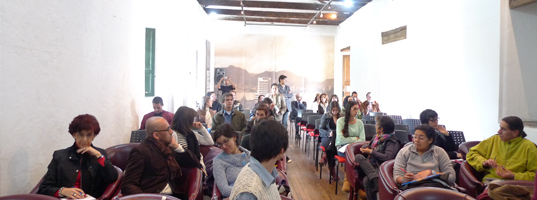
Universidad Nacional de Colombia, Museum Studies, Lecture with on line question broadcasting, March 29, 2011
Site and Activities: Medellin, Colombia, Centro de Desarrollo Cultural Moravia (host)
* Visits to Museo de Arte Moderno and Museos de Antioquia
* Discussions with staff and supporters of Casa de Integracion Afrocolombiana – five (5) participants
* Lecture at Centro de Desarrollo Cultural Moravia on the United States Capitol Visitor Center, interpretation of African Americans in US museums including Afrocolombians to gain public trust – audience forty to forty-five (40 to 45) participants
Accomplishments
The discussion at the Casa de Integracion Afrocolombiana provided the US Cultural Envoy a perspective on the issues that the Museo Nacional needs to interpret. Additionally, the discussion gave a voice to the young Afrocolombians with political interest to collectively improve the lives of those with fewer options. The community center itself highlighted the City of Medellin’s and the region’s proactive steps to help, down to the neighborhood level, the lives of its citizens, as well as the newly displaced from the countryside fleeing violence. The lecture at the Centro de Desarrollo Cultural Moravia was well attended by the public and was really a testament to recruiting efforts of the Director, Carlos Uribe. The goal to demonstrate the striking difference between Bogota’s and Medellin’s efforts to support their communities was met.
Site and Activities:Quibdo, Colombia, Center of Afrocolombian Cultures (host)
* Discussion on the creation of a cross cultural or Afrocolombian focused museum or center. The meeting was attend by fourteen (14) individuals that included a Ministry of Culture, University Faculty, Catholic priest and the setting Governor of State of Chocó (Malcom Cordoba, Gobernacion Chocó)
Accomplishments
Giovanni Cordoba, Director of the Center of Afrocolombian Cultures, wants to assure that the region Chocó has a museum or center of substance that can highlight Afrocolombians. Exactly what the entity should be is the question that has to be resolved before a strategic plan can be developed. After a preliminary meeting with Mr. Cordoba, his convening session’s goal was refined to establish a group of stakeholders who would move the project forward. Thus, the stakeholders meeting did acknowledge the US Cultural Envoy’s advice for a focus group to be established to shape the mission and vision of the entity. Also, whatever entity is established will need to be funded and maintained largely with funds outside the government. Therefore, fundraising/partnering has to be a key element of the much need strategic plan. The group’s preliminary proposal is being circulated.
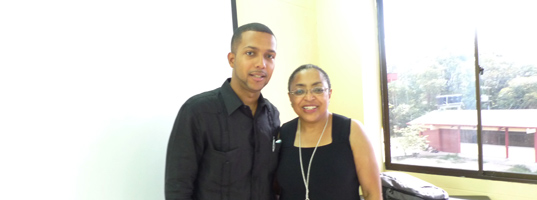
Malcom Cordoba, Gobernacion Chocó (Governor of Chocó) with US Cultural Envoy, Quibdo Gathering, March 26, 2011
Site and Activities: Barranquilla, Colombia, Museo del Caribe (Host)
* Tour of the new facility
* Presentation “Education in the Museum: Reaching New Audiences.” The presentation launched the Museo del Caribe inaugural education programs – 100 participants.
* Discussion with the education department centered on building committees of educators to help develop and evaluate education programs, as well as foster and maintain public trust.
Accomplishments
The opportunity to speak during the launch of the museum’s education program gave the small staff the opportunity ask the fundamental question, “how do you do all that needs to be done with a small staff of four people?” Thus, the discussion of volunteer programs and engaging teachers as active participants while classes visit the museum was timely. As the new facility matures, educators continuing to be involved will help maintain attendance as the tourist market is being built. The museum is located in an economic development area which is planned to have more tourist attractions in the coming years. The goal of establishing a dialogue around education must be continuously monitored and cultivated—this is a major component of the public trust that the museum must maintain. The Mueso del Caribe’s impressive facility, with exhibitions that range from interactive computer stations to simple hands-on “please touch” manipulatives, has a well developed approached to exploring the people, cultures and environments of the region.
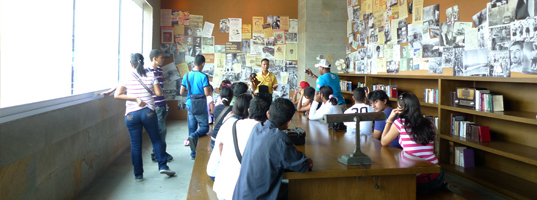
Museo del Caribe, Barranquilla, Colombia, Tribute to Local writers including Nobel Laureate Gabriel Garcia Marquez, March 30, 2011
Closing
Overall, the US Cultural Envoy program provided a museum professional to discuss strategic solutions to significant institutions’ issues on collecting and interpreting cultural property, as well as a direct link to information available to the United State’s 18,000 plus organizations. The project did open the door to the fact that more could be done to support Colombia’s museum and cultural community. The Cultural Envoy has agreed to share information and professional advice, and would welcome future involvement in the start-up project in Quibdo as well as continued refinement of Colombia’s standards on collection management. Lastly, any project that continues efforts to establish a multi-year approach to developing an interpretative program for Afrocolombian history and culture would not only be a milestone for the Museo Nacional but would also complement the US Envoy’s professional interests and inform her personal work.
The logistics for the twelve-day program went well with only minor changes from the outlined scheduled. The Envoy did make adjustments to lecture and discussion formats based on the needs of the host institution. The Culture Officer, Rex Moser, and Cultural Specialist, Marie C. Prieto, are to be commended for an outstanding, very busy, program. Marie C. Prieto was particularly sensitive to making sure each host institution’s representative was timely, and properly briefed on what was expected during the course of the visit.
The US Embassy public relations staff arranged newspaper interviews in every city and one very brief television segment on a style show. The visit was aided by printed and on-line material provided by the American Association of Museums.
China’s Museums and Museum Standards
In August 2011, I had the unique opportunity to travel to China to co-present a three-day workshop on “Museum Standards and Best Practices.” The American Association of Museums (AAM) was invited by the Chinese Museum Association along with Chinese State Administration of Cultural Heritage (SACH) to conduct a training session that included the translation of several AAM publications. As a Museum Accreditation Commissioner, my role was to emphasize what actually happens in institutions alongside the theoretical overviews. Julie Hart, Senior Director, Museum Standards and Excellence of the AAM conducted the workshop. Within the governmental structure, the Ministry of Culture oversees historical, cultural, art, memorials and site museums; whereas scientific, natural history and college museum are governed by other branches of government.
The ten-day trip included visits to museums, historic sites, and equally diverse dining experiences from two different regions of the country. Huang Lei, Head, Foreign Affairs & Exhibition Office from the Hunan Provincial Museum coordinated the workshop for the Chinese Museum Association. He skillfully orchestrated our ten-day experience, which included the assistance of Ms. Li Huijun and Xia Ying from the Hunan Provincial Museum who served as our translators and facilitators throughout the visit. The President of the Chinese Museum Association (CMA), Dr. Song Xinchao, is also the Vice-Director of the State Administration of Cultural Heritage.
Where to begin? The City of Beijing, the capital of the People’s Republic of China with a population of close to 30,000,000, including the 7,000,000 people designated as transients, has some of the most impressive buildings I have ever seen. The architecture utilizes space to make formidable buildings with large foot prints and breathtaking roof lines. The buildings are not New York style skyscrapers, but are very much local structures that evoke the centuries old architectural icons which preceded them. The streams of people on the streets and boulevards in late summer were enjoying school vacation by exploring Beijing’s museums and national sites. Yet, despite the crowds, there remains a calm sense of order everywhere. The presence of uniform military officers readily answering questions and quietly standing at attention was reassuring and somehow fitting to the degree of structure which is required to keep a city of thirty million on track. The site of the workshop was Tangla Beijing Hotel in West Beijing, a five-star hotel, near historic sites but directly across from the distinctive architectural structure that houses the Beijing Capitol Museum.
Over the ten-day period, the CMA arranged visits to various sites. Some of the experiences included:
Tiananmen Square: The People’s Square is 109 acres, which reportedly can hold one million people, and surrounded by iconic buildings of national importance – The National Museum of China (largest museum in the world); Tiananmen Gate built in 1419 and the tallest remaining gate in Beijing; Monument to the People’s Heroes, and Chairman Mao Zedong’s Mausoleum. One of the 21stcentury innovations in the Square are two forty-feet color LCD screens which, at the time of our visit, were showing continuous images of nature. The screens were installed for viewing the 2008 Olympics.
Tiananmen Square is bordered on the North side by the Forbidden City or Palace Museum. Built in the 1420s by the Ming Dynasty Emperor, and then later under the authority of the Qing Dynasty until 1912 when 2,000 years of a feudal monarchy system ended with the revolution headed by Dr. Sun Yat-sen. In 1987, the Palace Museum was designated by UNESCO as a World Heritage Site. The thousands of people streaming into the site that covers 7,800, 000 square feet underscored its estimated attendance of twelve million annually. It also is a result of the 2009 declaration and policy by the government that nearly 2,000 museums would have free admissions.
The National Museum of China will open fully to the public in 2012 as an administrative marriage of the Museum of Chinese Revolution and National Museum of Chinese History. One of the primary exhibitions is a visual exploration of 5,000 years of China’s history with wonderful examples of art and craftsmanship. Once fully opened, the Museum attendance will undoubtedly match or exceed the 12 million visits at The Palace Museum across the Square.
The Great Wall site that we visited is a major tourist site about a 90-minute drive from our hotel. The site overall includes a zoo and a key feature, a tram, which takes visitors up to the mountain side to a section of the Great Wall made accessible for large groups. The tram ride is short (5 to 7 minutes) and delivers you to a ticketed area where visitors walk up a moderately steep stretch of the wall. Thousands of people are climbing the wall with the goal of becoming a “hero” who makes it up to the designated landing. Our descent down was difficult, but the view of the wall hugging the mountain side was incredible. The walk down included quiet paths with many steps that were the original stone. The entire area is a tourist site that includes a theme park ride call a “slide” or a toboggan if you wanted a fast descent to the parking area and gift shops.
The Capitol Museumhas five floors of exhibitions encompassing the history of Beijing and was completed in 2006. During my short visit, I explored an exhibition on the art and craft of Chinese furniture. The design included running water and lily pads which were intended to provide an atmosphere so visitors would pause and reflect on the thoughtfulness and symbolism of each design. The most memorable aspect of the Capitol Museum’s building was the huge architectural feature which reached from the floor of the grand entrance hall, up five stores and through the exterior wall to the front of the building.
After leaving Beijing, we traveled to Xi’an, China about 750 miles inland from Beijing and a much drier environment. A major tourist attraction in the region is the tomb of the first Emperor of China, Qin Shi Haung. The formal name of the site is the Museum of Qin Terra-cotta Warriors and Horses. The striking aspect of the museum’s three archaeological pits is how technology is being used to evolve the science to better preserve the artifacts because light and air are the biggest dangers. The first pit which is the site of the 8,000 warrior figures and horses has produced volumes of information about the world of the first Emperor, and also revealed the challenges in preserving uncovered material because the color patina of the warriors disappears or loosens once exposed to the environment. UNESCO designation as a World Heritage Site was awarded in 1987.
Mound tombs are scattered across the landscape near Xi’an with the newest interpretative site being underground Hangyangling Museum with glass floor walking and viewing areas that permit visitors to view the air-conditioned dig sites with the least amount of danger to the objects. The 12-15 inch figures unearthed in the Tomb of Emperor and Empress Jingdi represented court life. The human figures for example were once clothed warriors; other figures include maidens, domestic animals, and an array of cooking utensils. The visitor experience was augmented with a 3D film that highlights the scientific discovery and the history of the Emperor Jingdi.
The Muslim community in Xi’an near the Drum Tower held the most surprises notably being The Great Mosque and the Muslim Quarter along with a thriving commercial area of shops, restaurants, farmer produce, and vendors of various products. Women’s and men’s attire referenced cultural practices in other parts of the Islamic world, women’s head scarfs for example, but there was a distinctiveness that evoke a Muslin world dating back to the thousands of years old silk trading routes that spanned Asia, India, China and Europe. The thriving streets and alley ways in the Muslim community had a resilience that centuries of endurance could only create.
Workshop in Beijing China Museum Standards and Best Practices
Terrie S. Rouse, in her role as an Accreditation Commissioner for the American Association of Museums, will co-present a workshop in Beijing China with Julia Hart, Senior Director, Museum Standards and Excellence. The workshop is slated for August 9-11, 2011, and is appropriately titled Museum Standards and Best Practices.
United States Cultural Envoy, US Embassy South America
(Colombia, South America), March 22 to April 2, 2011
The goal of the Museo Nacional de Colombia proposal to the US Embassy was to gain insight from an experienced U.S. museum professional on strategies and considerations for incorporating the history and culture of Afro-Colombian descent (aka Afrocolombians) into the content and visual presentation of the museum. Also, the Embassy and Museo Nacional staff saw it as an opportunity for the US Cultural Envoy’s experience, as a museum professional and United States Accreditation Commissioner, to be shared with Museum Studies students and other professionals. The other topics added to the roster were issues of standards, collections, education and accreditation, along with related topics involving management of cultural property. The expanded opportunity entailed the US Cultural Envoy’s travel to Bogota, Medellin, Quibdo and Barranquilla. A major theme over the twelve-day experience was how institutions can build “public trust” and expand involvement of the community, including Afrocolombians.

